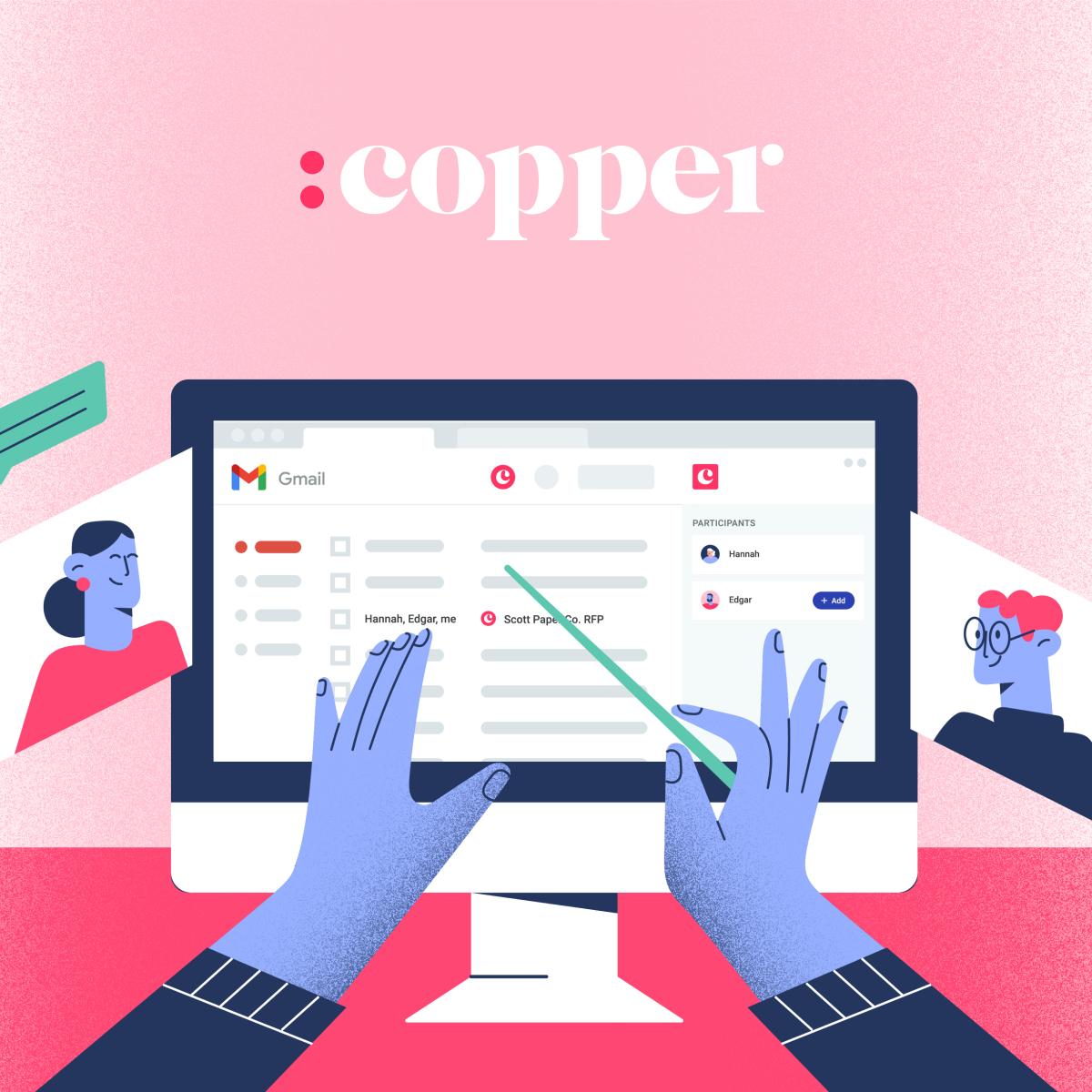
Katrina Oko-Odoi
Sr. Content Marketing Manager
Remember when creating a customer loyalty program was as simple as giving your frequent customers a paper punch card and calling it a day? While hole-punch loyalty cards can still be a part of your strategy, they certainly aren't the end-all, be-all.
Whether you’re in the business to consumer (B2C) or business to business (B2B) space, with more interactions happening online and recession dread looming, being creative with your customer loyalty programs can make a big difference. But how exactly can you create an engaging customer loyalty program for your current buyers?
Let’s look at some companies who have the whole customer loyalty thing down. Then, we’ll jump into how to create a program that helps support your business goals.
Customer loyalty program examples: 3 companies that get it right
Gather inspiration for how to create a customer loyalty program from examples of three existing programs that are thriving. These programs show us how versatile customer loyalty initiatives can be — rewarding everything from customer purchases, to learning, to sharing about/recommending a brand.
Ren offers customer tiers to incentivize loyalty
Clean beauty brand Ren has a tiered rewards program, Clean Rewards, where customers move from Ally to Advocate to Activist. Each tier offers better deals and rewards than the previous tier. Customers move up through the levels as they purchase and interact with the brand online.
This program has been wildly successful, increasing the average customer's purchase amount by an astonishing 68%.
Lenovo uses education to garner customer loyalty
When Lenovo purchased IBM’s X86 servers, IBM’s former business partners weren’t sure they wanted to continue selling the servers, so Lenovo created LEAP (Lenovo Expert Achievers Programme). This program allowed business partners to earn points for completing learning modules and tracked sales performance. Partners can then redeem those points for rewards or even exchange them for cash.
Lenovo incentivized learning and sales to keep their partners on board, and it’s been a hugely successful program for them: their participants sold 7X more products than they had the year before.
Fluidra rewards dealers with VIP treatment
Global pool equipment manufacturer Fluidra is one of the largest players in its industry, with the mission of “delivering the perfect pool experience that enhances comfort, enjoyment, and peace of mind for pool owners.” The brand has built an incredibly successful loyalty program for its B2B customers, including pool retailers, builders and service providers.
Their membership-based program, Fluidra Rewards, gives pool dealers points that accumulate based on the volume of Fluidra products they sell. Dealers can then apply those points to different exclusive incentives – the most coveted of which is their Signature Club P Trip, for which they fly VIP members to an exotic location for a weeklong luxury vacation.
The perks are sweet, but perhaps even more valuable are the services offered to members, including lead generation and marketing support — demonstrating Fluidra’s true commitment to dealers’ success.
Get the latest from our blog every month
How to create a loyalty program: 8 steps for building customer loyalty
Whether you’re a B2B or B2C company, the steps for creating a customer loyalty program are relatively straightforward. No matter what your goals or rewards will be, follow these eight steps to create a program that drives results.
1. Become a company worth the loyalty.
Before building a customer loyalty program, ensure that your company warrants that loyalty. For example, do you provide an excellent customer experience that results in repeat business and referrals?
If so, you’re ready to move on. If you’re not quite there yet, it’s important to spend some time making your customer experience exceptional.
2. Choose the customer behavior you want to reward.
This step will take some strategic thinking, and it all goes back to the original purpose of your program. Think about what specific customer actions or behaviors you want to reward. The easiest way to figure this out is to look at your business goals and trace the goal (or goals) to a desired behavior. Are you laser-focused on increasing sales, or is your priority boosting brand awareness? Perhaps your biggest objective is for your customers to master your product to help reduce customer churn.
Once you’ve pinpointed the main behavior you want to reward, coming up with the actual rewards will be a piece of cake.
3. Choose the rewards.
How do you want to reward your customers? What will be most valuable to them? For example, you can offer store credit, discounts, exclusive products, sales, membership tiers, gift cards, special training, events and more. Think about your customers and what will be most exciting for them.
Your target audience (consumers vs. businesses) might also play a role in the reward selection. For example, a B2C customer might really love store or product credit. In contrast, a B2B customer might like something like access to high-touch support, insider training events, or exclusive 1:1 meetings with company executives.

CRM for growing businesses
Build better relationships with Copper
Start a free 14-day trial to see why small and mid-size businesses love Copper.
4. Choose the structure.
Once you know the rewards you want to offer, it's time to figure out how you'll set those rewards up. You might create a points program, a cashback program or a digital punch card program. You can develop tiered programs, which offer different benefits to different customer levels (like Ren in the example above). Or you can even develop a hybrid version of any of those options — or think up something entirely fresh that fits your brand personality and customer base (we wouldn't turn down an invite to an exclusive live-stream Ed Sheeran concert, in case anyone's asking).
The goal of the program structure is to ensure your customers take the desired action (make a purchase, refer a friend, complete a product tutorial) and get rewarded for it as simply as possible.
5. Identify and implement the necessary software.
There are dozens of solutions on the market that make creating customer loyalty programs super simple — like LoyaltyLion, Yotpo, Annex Cloud, Zinrelo and more.
And don't forget to make sure your customer loyalty program software integrates easily with your existing software (like your CRM).
6. Incorporate it into your team's workflow.
Once your program is designed and the software is implemented, it's time to work the customer loyalty program into your existing processes. Whether you’re promoting the customer loyalty program after a sale or trying to get sign-ups via email, figure out how to fit it into your team's current responsibilities.
Then, devote sufficient time to train your employees on the new program. Every staff member needs to know why the program is important and how to get as many customers onboarded and engaged as possible.
7. Promote and launch the program.
You're finally ready to launch the program. But first think about how you'll successfully promote it. As with any initiative, the better you prepare the launch and marketing ahead of time, the better the results will be. Be sure to incorporate in-store signage (if you're a brick and mortar), social media posts, email marketing and maybe even a launch event to ensure your customer loyalty program starts with a bang.
To set yourself up for success, consider offering early adopters a special introductory promotion. For example, you can offer 500 bonus points or additional cashback to anyone who makes a purchase and joins within the first 30 days.
8. Adjust as you go.
As with any program, it's important to track and measure your success to ensure it’s worth the time and resource investment. Measuring loyalty program success will look different for every company depending on the type of program and your business type. Regardless, it's important to establish some goals and measurable metrics from the start.
For example, you might look at how much your enrolled customers spend versus your non-enrolled customers or compare churn rates between the two groups. You can also analyze how the customer lifetime value (CLV) or average purchase amount changes after implementing the loyalty program. Keep in mind that some intangible benefits, like making your customers feel special and valued, are harder to measure — but equally valuable.
If you aren’t sure how to measure the success of your loyalty program, consider conducting a survey to field feedback on what’s working and what isn’t and identify ways to improve the program moving forward.
Getting started with a customer loyalty program
Whether you’re trying to recession-proof your business or boost sales, building a customer loyalty program just makes sense – especially now that you know exactly how to create customer loyalty.
As the customer loyalty strategy examples we shared show, these types of programs can be both dynamic and successful — the secret ingredient to help you increase sales and weather the inevitable ups and downs of business.
If you’re looking for a customer-centric CRM to help you manage your customer loyalty program, give Copper a try. We’re laser-focused on customer relationships, and we’re the only Google-recommended CRM on the market. Try Copper free for 14 days.






